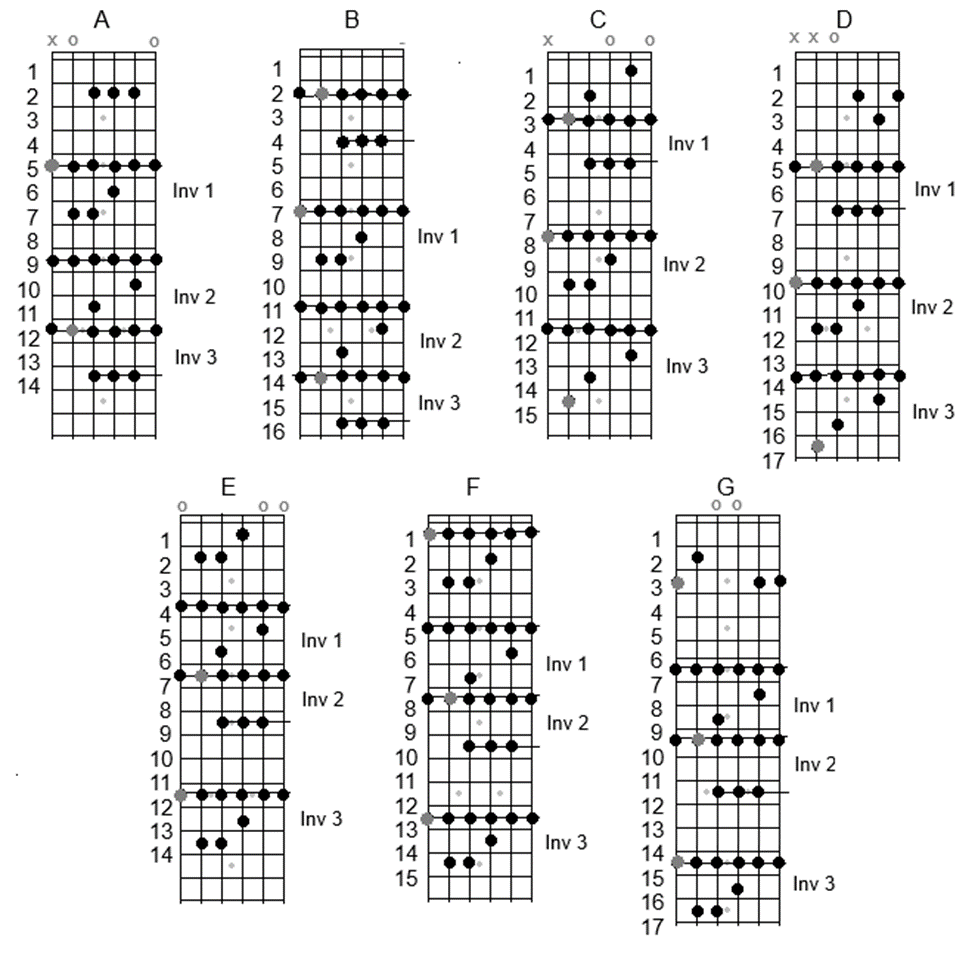Chord Inversions and Capos
- H Kurt Richter
- Jul 7, 2024
- 3 min read
Inversions and Capos
An explanation of how to use a capo is given online at the following website: https://lessons.com/guitar-lessons-for-beginners/how-to-use-a-capo
A capo is a mechanical device that clamps on the neck of the guitar and depresses all the strings behind any given fret. That is, a capo acts like the pointer-finger in a full bar-chord, freeing up all four fret-fingers to make a bar-chord instead of having to make an actual bar-chord. It is therefore often used to play rhythms in higher registers without having to use bar-chords. It is also used by less accomplished players to use simpler chords in different keys rather than having to make bar-chords.
Be aware that a capo does not actually change the key of the guitar, as implied in the site given above. You can think of it that way, but it is not changing the natural key of C on the guitar. Rather, it is merely acting like an extra finger laid across the fretboard.
All the natural notes on the guitar remain the same, regardless of where you place the capo. The only difference is that it allows you to use different chord-forms, rather than bar-chords, when a different key other than the one you are used to playing is desired. In other words, all it does is allow you to play rhythms in higher registers without having to use bar-chords. It is a tool, and must be regarded as such, not as a “key changer”.
Unfortunately, because this misconception has become so common, it gets regurgitated by experienced players, and has therefore become part of the “norm” in guitar-playing. Just know that when playing a chord using a capo, the natural notes have not changed.
Example: Place a capo behind the 2nd fret and play the low-register D-form chord. It is called a “D-form” because it is not actually the D-chord, it is the E-chord. Notice that the real notes are for the E-chord, not the D-chord that is played in the lowest register. This is clearly shown in the “Capo Chart” given at the above website. When you play what is ordinarily a D, but with the capo at the 2nd fret, the actual chord is E.
Fortunately, the capo can be used by advanced players to give them a means of doing things using open strings in different keys rather than having to stick with the standard open strings on the instrument, or to play rhythms in higher registers, or to change the overall sound of the guitar. For instance, placing the capo at the 12th fret makes all the things played above the 12th fret sound like they are being played on a mandolin.
The following charts show the several inversions associated with each chord played in the lowest register. The higher-register chords are shown using bar-chords, but you can also think of the bar as indicating the placement of a capo, instead of the pointer-finger. Otherwise, should you get used to making bar-chords, the charts serve as a reference for the various inversions you can memorize that correspond to low-register chords.
Inversions for the Fundamental Ionian Major Chords
Hints: Roots are shown as grey dots. Fret-numbers are shown at left of each template. Inversion numbers are shown at right of each template. The “form” of a chord is that of the chord at, or closest to, the nut. Thus, any given C-form bar-chord and the A-form on the same template have the same root, but not the same octaves of that root. Also, the 3rd Inversion is simply the octave of the first chord (i.e., the lowest form) in each chart.
Inversions for the Fundamental Dorian Minor Chords
Hints: Roots are shown as grey dots. Fret-numbers are shown at left of each template. Inversion numbers are shown at right of each template. The “form” of a chord is that of the chord at, or closest to, the nut. Thus, any given Em-form bar-chord and the Dm-form on the same template have the same root, but not the same octaves of that root. Also, the 3rd Inversion is simply the octave of the first chord (lowest form) in each chart.
EOF




Comments